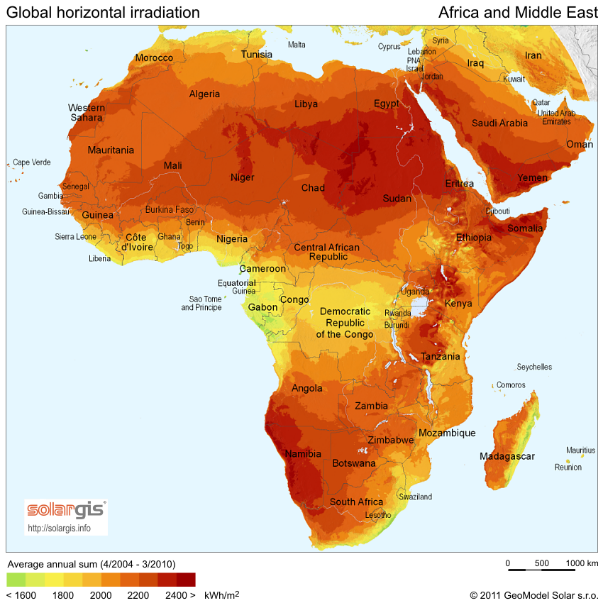Exploring Solar Options for a Sustainable Energy Future in Republic of Chad
Posted by Glen Courtis on April 29, 2015
More than one-third of people in the world start life without access to electricity and clean fuels for cooking, heating and lighting, according to the International Energy Agency. In Africa alone, the IEA estimates 600 million people do not have access to electricity and this number is expected to rise to 645 million by 2030.
In the Republic of Chad, Africa’s fifth largest nation, only 3.5 per cent of the total population had access to electricity in 2013. Instead of relying so heavily on fossil fuels, Chad should explore solar as a more viable and sustainable energy option.
The northern region of Chad experiences roughly 2850-3750 hours of sunlight each year. However, running an electricity network across a 1.2 million square kilometre country (roughly twice the size of Texas), is neither efficient nor feasible for most countries, let alone a developing one. Thus, creating a series of microgrids may be the most cost-effective and efficient method of providing Chadians with access to electricity. There are two ways the country can accomplish  this: solar PV installations with battery backup in small, rural villages across the nation or hybrid solar PV installations with battery back-up and diesel base load for larger cities.
this: solar PV installations with battery backup in small, rural villages across the nation or hybrid solar PV installations with battery back-up and diesel base load for larger cities.
In the small, rural village of Mombou, for example, 800 people have already benefitted from a single solar PV installation (rated at 39.6 kWp), along with a secure Lead acid deep cycle OPzS battery backup system, that keeps the street lights on overnight. And in larger villages and city centres such as the country’s capital, N’Djamena, solar PV can be injected for peak load management along with diesel or other fossil fuel base load generators. Injecting solar PV energy into a diesel microgrid can reduce the fuel consumption on the diesel generator by managing the peak load throughout the day and the battery backup with the PV system can allow for more routine maintenance outages for the diesel generators.
To increase Chadians access to energy and reduce those stricken with energy poverty, there is no single simple solution. Since Chad is a developing nation it may not be able to financially support establishing a network of microgrids throughout the country. However, with the growth of Chad’s telecommunications industry, the country may be able to take advantage of the wealthy private sector. Working together, the government and the private partners could establish a solar energy system in the country, increasing access to electricity while ensuring future energy sustainability.
Edited from original submission.
Filed under: Students on Sustainability